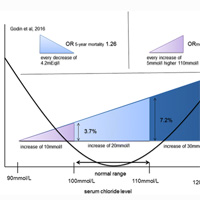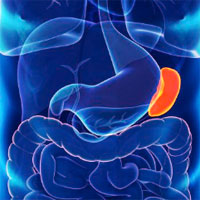Tag: study

Department-Based ICU Improves Patient Survival Rates
A new Michigan Medicine study found that implementing a dedicated emergency medicine department-based intensive care unit improved patient survival rates and lowered inpatient intensive care unit (ICU) admissions. In the... read more

Risk Factors Associated with 30-day Mortality for Out-of-Center ECMO Support
Out-of-hospital extracorporeal membrane oxygenation (ECMO) implantation and ECMO transport have become a growing field useful for emergent treatment of heart or lung failure with increasing number of centers launching such... read more

Extubating Ventilated Patients on Vasoactive Infusions is Safe
In a large single centre study, 21% of intubated patients who received infusions of vasoactive infusions while mechanically ventilated were extubated for the first time while still receiving them. Coincident with their earlier... read more

Counterbalancing Work-related Stress? Work Engagement Among Intensive Care Professionals
Work engagement counterbalances work-related stress reactions. The relatively high workload in ICUs, coupled with an especially heavy emotional burden, may be acknowledged as an integral part of ICU work. This workload... read more

Audiobooks As Good As The Old-fashioned Reading
With the rise of new technologies, long gone are the days of cassette tapes and CDs that made stopping, rewinding, learning, and restarting an audio recording an annoyance. Digital media now makes it possible for individuals... read more

Serum Chloride Levels in Critical Illness – The Hidden Story
Chloride is the principal anion of the extracellular fluid and vital for both serum electroneutrality and acid-base homeostasis. The aim of this review is to investigate the relevance of dyschloremia in the critically... read more

Safety and Efficacy of VBF in Critically Ill, Mechanically Ventilated Adults Using the PERFECT Protocol
Underfeeding in critical illness is common and associated with poor outcomes. According to large prospective hospital studies, volume-based feeding (VBF) safely and effectively improves energy and protein delivery to critically... read more

Hemodynamic Monitoring – The Why, When, Which and What
Although the need to properly assess and monitor the hemodynamic status of a critically ill patient appears self-evident, the plethora of information in the published literature over the past two decades has resulted in complexity... read more

The Spleen: The Forgotten Organ in AKI of Critical Illness
Acute kidney injury (AKI) is an increasing medical burden and is independently associated with mortality. AKI is a common comorbidity in the intensive care unit (ICU), with sepsis-associated AKI seen in almost a quarter of... read more

Possible Link Between Splanchnic Circulatory Changes and Exhaled CH4
The aim of this study was to explore the possible link between splanchnic circulatory changes and exhaled CH4 in an attempt to recognize intestinal perfusion failure. Methane (CH4) breath test is an established diagnostic... read more

Inter-Rater Reliability Between PICU Nurses Performing a Modification to the Glasgow Coma Scale
The objective of this study was to estimate the inter-rater reliability of critical care nurses performing a pediatric modification of the Glasgow Coma Scale in a contemporary pediatric intensive care unit (PICU). All... read more

Amount of Muscle Mass During ICU Admission May Be Linked to Survival
In the study cohort, ICU admission pectoralis muscle area (PMA) was associated with survival during and following critical illness; it was unable to predict regaining an independent lifestyle following discharge. ICU admission... read more

Risk of Sepsis and Mortality Among Patients with COPD Treated With Angiotensin-Converting Enzyme Inhibitors or Angiotensin Receptor Blockers
Angiotensin receptor blockers were associated with lower rates of sepsis and mortality than angiotensin-converting enzyme inhibitors in the patients with chronic obstructive pulmonary disease. The similar findings were also... read more

Early Goal-directed Therapy Using a Physiological Holistic View
If peripheral perfusion-targeted resuscitation improves 28-day mortality, this could lead to simplified algorithms, assessing almost in real-time the reperfusion process, and pursuing more physiologically sound objectives.... read more








